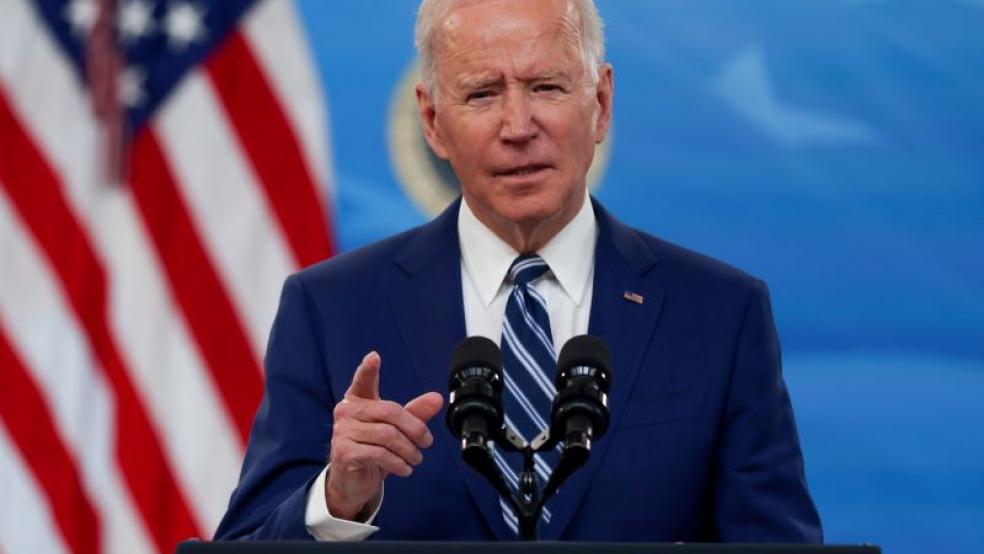The Biden administration on Wednesday unveiled its proposal to provide a historic increase in federal assistance to households, with significant new spending on child care, health care, paid leave and education.
Biden’s “American Families Plan” includes $1 trillion in spending over 10 years and $800 billion in tax credits, paid for in large part by a $1.5 trillion tax increase on the nation’s wealthiest households.
Here are some of the major components of the proposal, along with tax increases intended to cover much of the cost.
Child care: Biden wants to spend $225 billion over 10 years to reduce the cost of child care, with low- and middle-income families required to pay no more than 7% of their incomes on care. The White House says the average family would save about $14,800 per year under the plan.
Pre-K: The plan calls for free pre-school for all three- and four-year-olds, with all teachers earning a minimum of $15 an hour, at a cost of $200 billion over 10 years. The White House says the average family would save about $13,000 per year.
Free and reduced-cost college: All students would qualify for two years of free community college, at a cost of $109 billion over 10 years. The plan would also increase Pell grants by $80 billion for students at four-year colleges and spend $62 billion to help disadvantaged students stay in school.
Nutrition: The plan would spend $45 billion to improve and expand federally funded school nutrition programs, an effort that would include extending free school meals through the summer.
Paid leave: The plan would create a national paid family and medical leave program, at a cost of $225 billion over 10 years. Workers would eventually be eligible for 12 weeks of paid time off in a variety of circumstances, including birth, death and illness, with pay set at two-thirds of average wages, up to $4,000 per month. Low-income workers would receive a higher wage replacement rate of 80%.
Health care: Households that buy their own health insurance through the federal marketplaces would receive $200 billion in additional tax credits over 10 years to help reduce the cost, with an average savings of $50 per month for 9 million people.
Low-income tax credits: Biden wants to make permanent the low-income tax credit for childless workers, at a cost of $125 billion over 10 years.
Child care tax credit: The proposal calls for making permanent the enhanced child tax credit, at a cost of $450 billion over 10 years. Passed as part of the latest pandemic relief package, the enhanced credit provides more assistance to more families, and pays it out as a benefit on a monthly basis.
IRS enforcement: The IRS would get an additional $8 billion per year for 10 years, which the White House says would produce at least $780 billion in new revenue through stricter enforcement of the tax code and new reporting requirements.
Tax hikes: The top income tax rate would rise to 39.6%, up from the current 37%, and households earning more than $1 million a year would face higher taxes on capital gains, with the top rate set at 43.4%, more than twice its current level. The carried interest loophole, which allows private equity investors to treat some types of income as capital gains, would be eliminated, as would a real estate tax break popular with wealthy investors. And the proposal calls for eliminating the “step-up in basis” on inheritances, which allows wealthy families to pass along assets untaxed at death.
What’s not in the bill: The Biden proposal makes no mention of eliminating the cap on the state and local tax deduction, a sensitive topic for some blue state Democrats. It also leaves the estate tax at current levels, despite Biden’s pledge to increase it. And it does not include some ideas other Democrats had sought for lowering prescription drug prices.
What comes next: Biden is expected to outline his proposal in his address to Congress Wednesday night and may invite Congressional leaders from both parties to the White House next week to discuss the plan. But the proposal, which would mark a significant expansion of the government’s involvement in Americans’ lives if enacted, won’t be easy to pass, in whole or in part.
“The package could face even more challenges than the American Jobs Plan, Mr. Biden’s physical infrastructure proposal, did in Congress,” Jim Tankersley and Dana Goldstein of The New York Times say. “The president has said repeatedly that he hopes to move his agenda with bipartisan support. But ... Republicans have expressed much less interest in additional spending for education, child care and paid leave than they have for building roads and bridges. They have also chafed at the tax increases Mr. Biden has proposed, including the ones that will help pay for his latest package.”




